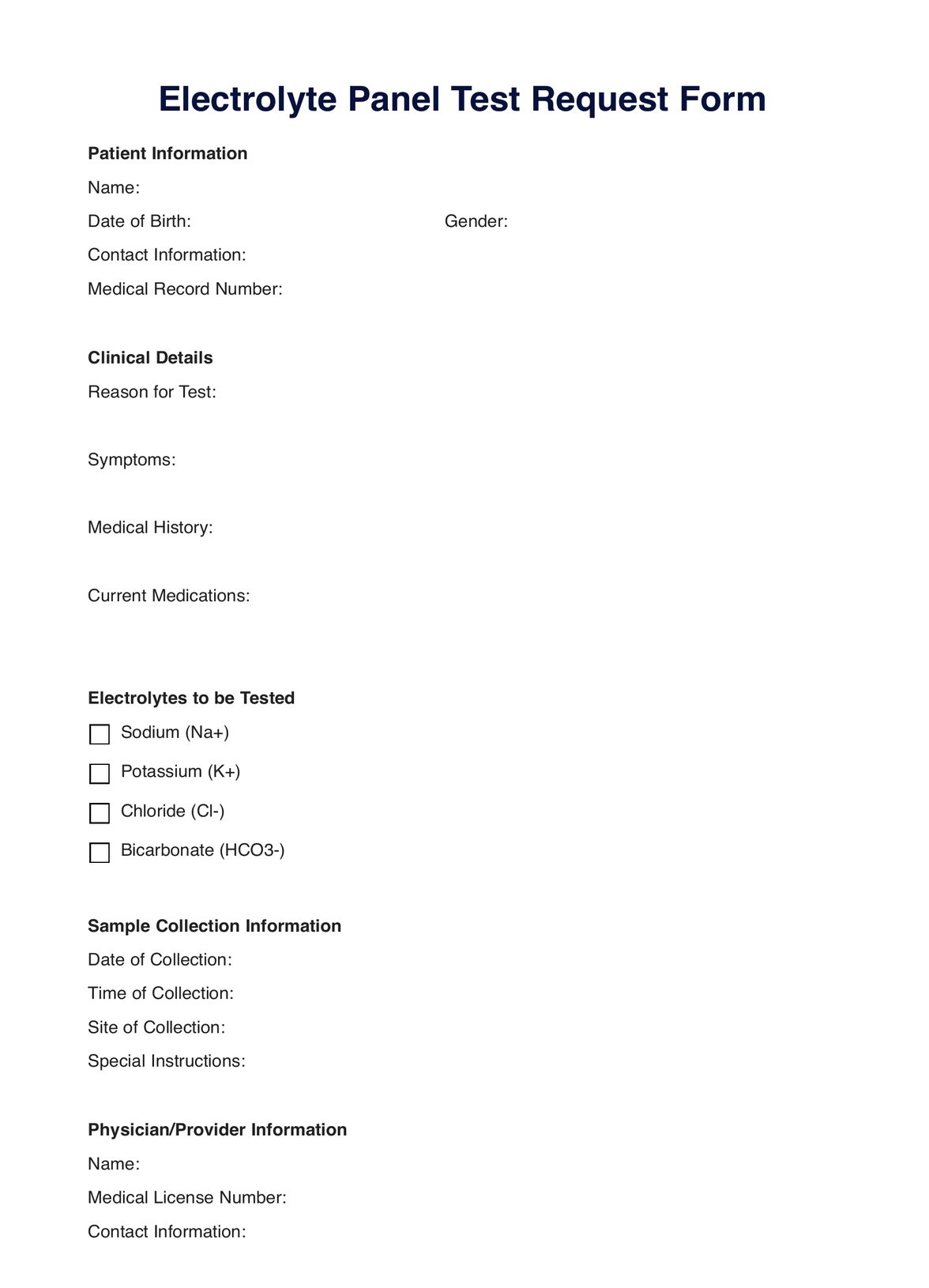Healthcare providers, including doctors, nurses, and specialists, typically request Electrolyte Panel Tests for patients.

Electrolyte Panel
Get insights into your health with an Electrolyte Panel Test. Measure vital electrolyte levels for a comprehensive health assessment.
Use Template
Electrolyte Panel Template
Commonly asked questions
Electrolyte Panel Tests assess and monitor electrolyte balance in various situations, including dehydration, kidney disease, heart conditions, and critical care settings.
Electrolyte Panel Tests involve a blood sample collection, usually from a vein, which is then sent to a laboratory for analysis. Results are used to diagnose medical conditions and guide treatment.
EHR and practice management software
Get started for free
*No credit card required
Free
$0/usd
Unlimited clients
Telehealth
1GB of storage
Client portal text
Automated billing and online payments











